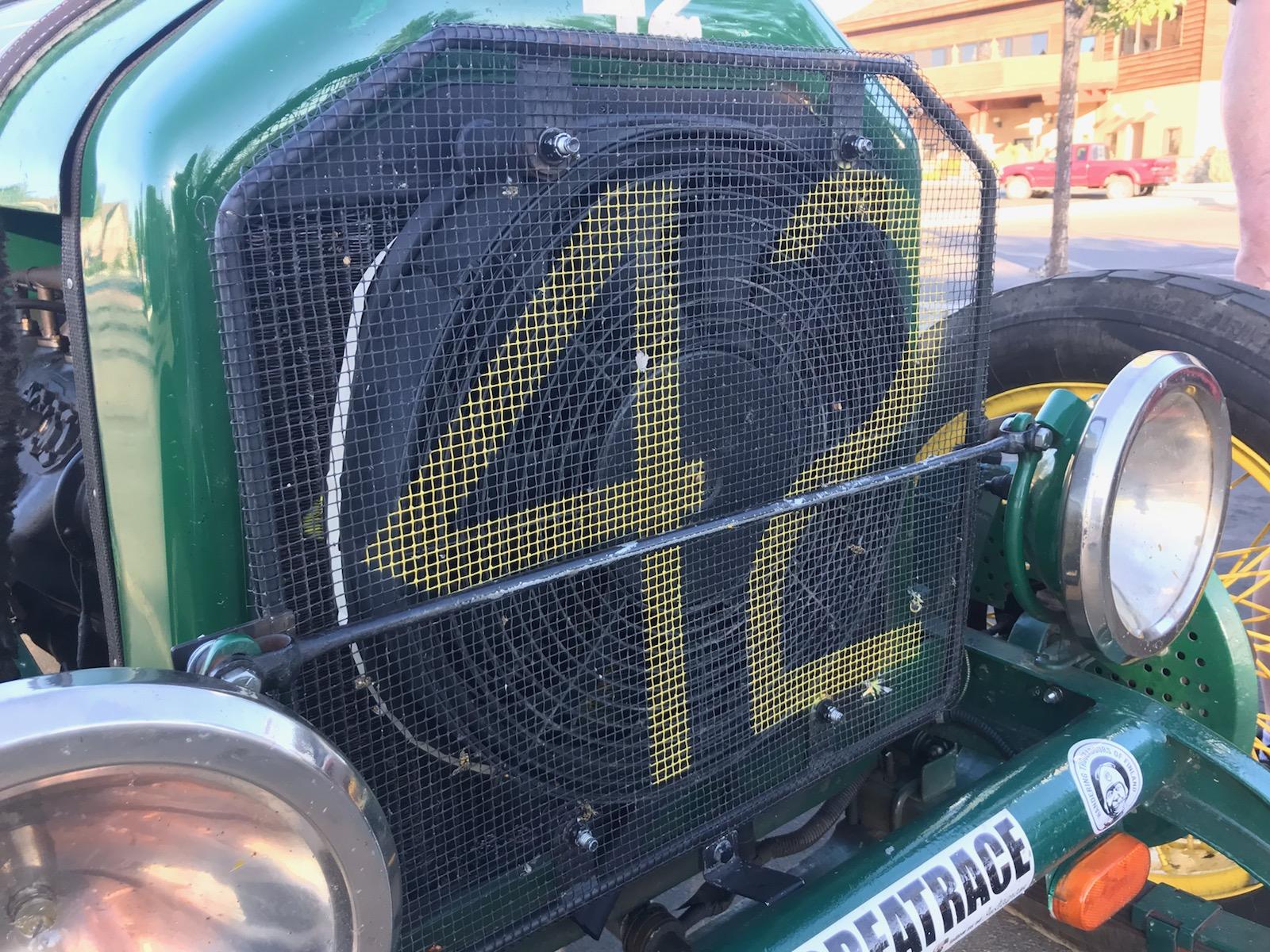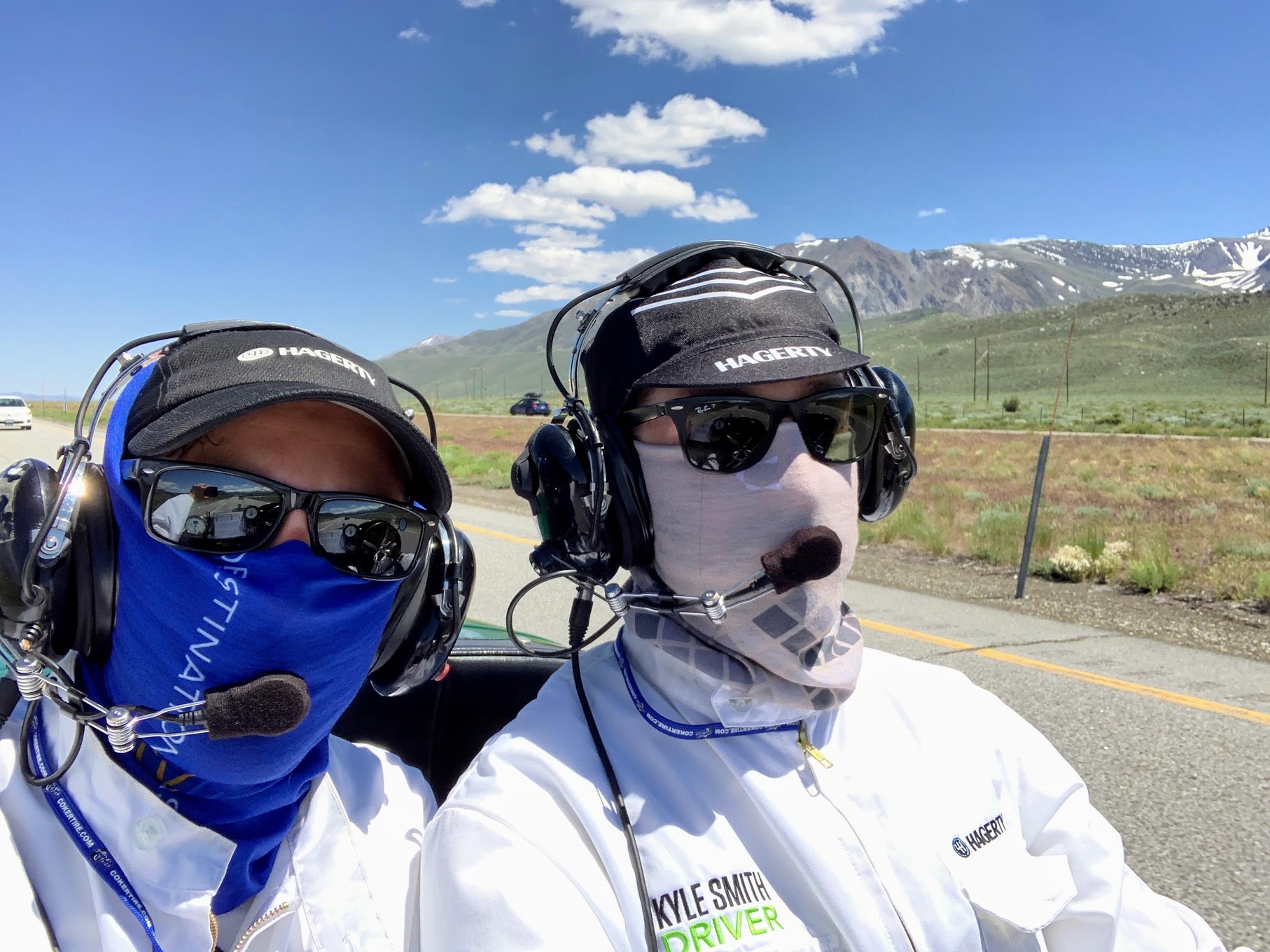How we survived a trip across the high desert in a 102-year-old race car
Piloting a 1917 Peerless race car across the high desert of California and Nevada is no jaunt across town for ice cream. It takes mental fortitude, preparation, and honestly—a bit of craziness. (Also: sun protection.) Luckily, if you are thinking about attempting something similarly brave or stupid, here are a few tips that will help you be successful.
The drive is part of the Great Race 2019, a time-speed-endurance rally that started in Riverside, California over this past weekend, and is headed towards a finish in Tacoma, Washington. The second day of rallying carried me and my navigator Brett through the Mojave Desert, including a few long grades that pushed our 1917 Peerless Speedster to its limits.
The three of us survived by being smart about our approach. We knew it would be long, hot, and grueling. Using a few small essential tools and guiding tips, we and the car were able to arrive at the competitors’ dinner intact. Bonus points because we were not sunburned nor were we babbling like crazy people.
CoolShirts


I thought the CoolShirt was bit gimmicky at first, but my tune has changed significantly after using it a few times. Essentially, the CoolShirt is a heavy cotton shirt with surgical tubing stitched around the wearer’s torso. A small cooler lives in the storage compartment of our Speedster, and a small pump pushes ice water through the tubing, circulating through the shirt. It keeps your core temp from overheating, and in a rally like Great Race, that helps keep you sharp enough to do the time-speed-distance math and maneuvers correctly.
Electric cooling fan


This ended up being the CoolShirt for the Green Dragon’s 102-year-old 330-cubic-inch V-8. Set up as a pusher on the front of the small radiator, I could flip the fan on and off based on cues from the temperature gauge and the terrain. We repurposed a foam rubber door seal as a fan shroud to make the fan more efficient by distancing it from the core, allowing air to go around (rather than through) the radiator. We hammered miles-long grades at wide open throttle. And we never saw the temp gauge go past 200 degrees. Science!
Cover up

Sunscreen can only do so much over the course of a full day, and when we are on the clock while rallying, we usually don’t have the chance to re-apply properly. Rather than endure the certain sun and wind burn, Brett and I elected to cover as much skin as possible. Hats, sunglasses, over-the-ear headsets, and buffs covered all but a small portion of our faces. I also wore gloves to help with the heat of the black steering wheel, while Brett regularly hid his hands to make sure he would make it to the finish line without blisters.
No fuel gauge
This seems a little counterintuitive, but it’s really about psychological management more than anything practical. We knew the Peerless’ 18-gallon fuel capacity should be enough to make it to our destination, so watching the gas gauge drop with no station in sight would have only created undue panic. Instead, we put our faith in the preparation—an absolutely full tank to start the day—and motored down the road watching the temp gauge rather than a fuel gauge.
These small bits of prep ensured we were not only successful during our stressful desert run, but fit and ready for another day of this 1000-plus-mile rally.


